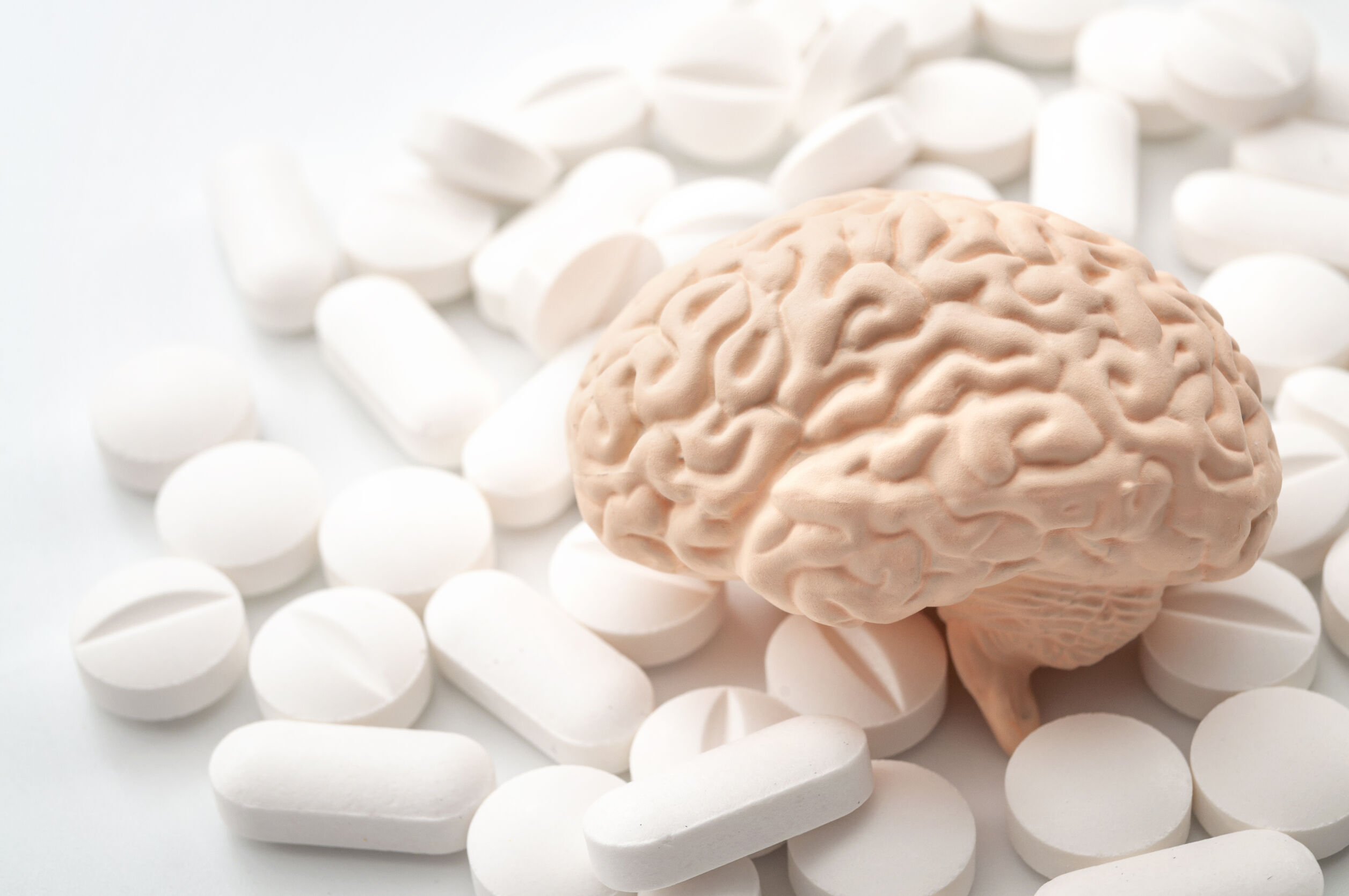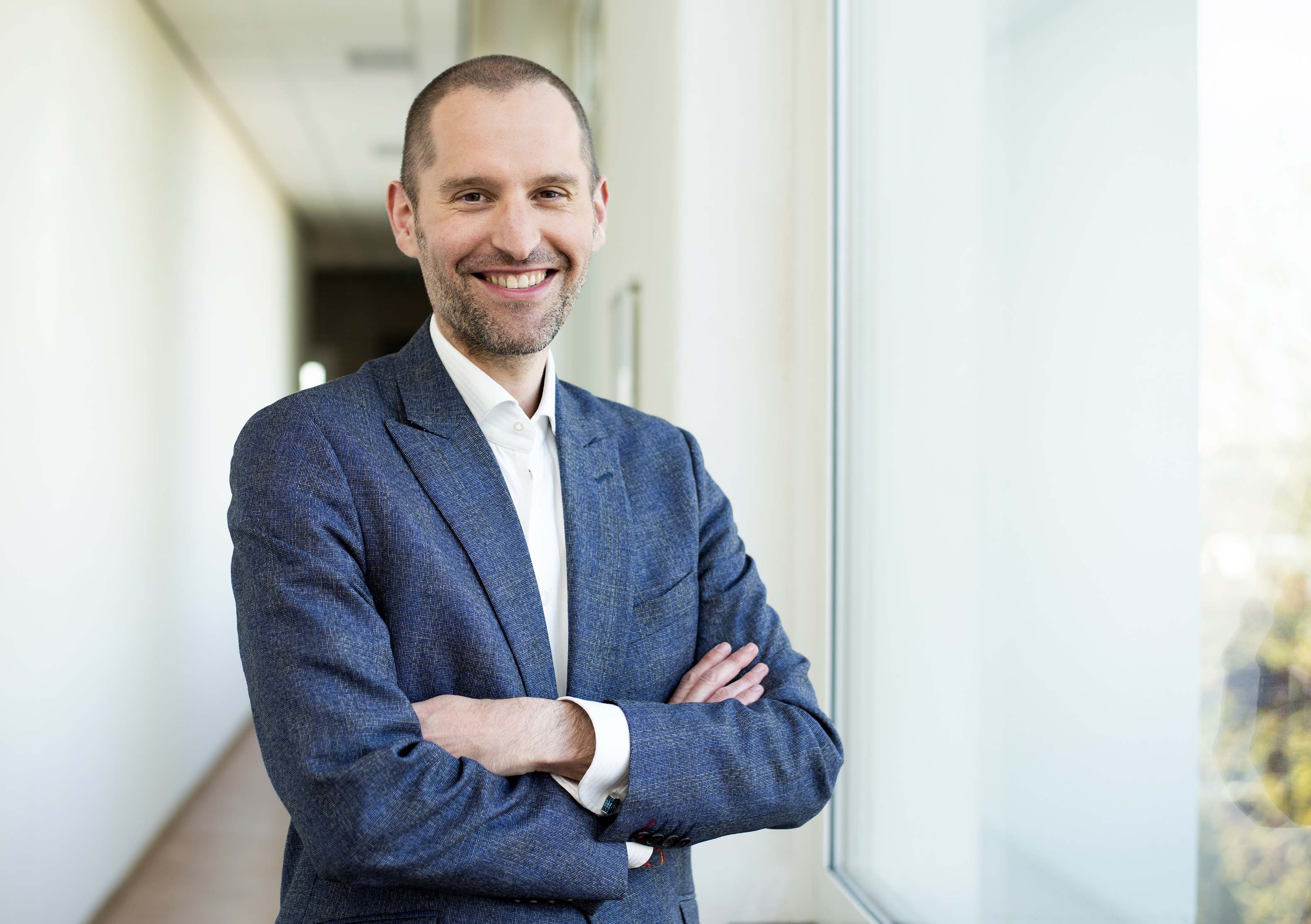Waarom breindoping grotendeels gebakken lucht is
Als theoretisch psycholoog wil Stephan Schleim niet alleen het naadje van de kous weten, maar ook waar de wol van de kous vandaan komt. Hij analyseert de vooronderstellingen van onderzoek en bekijkt wetenschappelijke trends vanuit een ander perspectief. Zoals die van breindoping.

Zonder medische indicatie middelen als ritalin, adderall of modafinil gebruiken? Dat wordt wel aangeduid als breindoping: 'middelen' om beter te kunnen leren, de concentratie te vergroten of creatiever te worden. Ook drugs worden daarvoor gebruikt, zoals lsd. Sinds het begin van de eeuw staat het verbeteren van het brein sterk in de belangstelling van de wetenschap en de media. Reden voor universitair hoofddocent Theoretische Psychologie Stephan Schleim om daar een door NWO gesubsidieerd onderzoeksproject aan te wijden. De afgelopen vijf jaar analyseerde hij twintig jaar aan wetenschappelijke publicaties over het nemen van 'middelen' om beter te presteren op cognitief niveau.
Wat is breindoping?
Ziedaar het onderzoeksveld van Schleim: de vooronderstellingen van psychologisch onderzoek analyseren. Zo merkt Schleim over de onderzoeken naar breindoping op dat het onderscheid tussen mentale gezondheid en een geestelijke aandoening helemaal niet zo duidelijk is. 'Veel onderzoekers maken het zich makkelijk door te zeggen dat als een arts een middel voorschrijft, het een behandeling is en geen breindoping', zegt Schleim. 'Maar het verschil tussen die twee is heel onduidelijk. Alcohol valt ook onder de middelen waarmee je je brein kunt dopen. Als je angstig of verlegen bent, kun je alcohol drinken om daarmee om te gaan, maar is dat drugsgebruik, genotmiddelengebruik of zelfmedicatie?'
Placebo-effect
Bovendien blijken veel onderzoeken te zijn uitgevoerd met veel te kleine populaties proefpersonen. 'Bij zieke proefpersonen is het natuurlijk veel duidelijker waarom een onderzoek met medicijnen belangrijk is', zegt Schleim. 'Bij gezonde proefpersonen moet je voor een ethische commissie overtuigender argumenten hebben. Dat is zo ingewikkeld en duur dat de onderzoeken naar breindoping meestal heel klein zijn, met twintig tot dertig proefpersonen. Wij leren onze studenten dat een dergelijke omvang veel te klein is voor algemene conclusies. Maar die onderzoekers moeten het noodgedwongen soms met zulke kleine groepjes doen.' Schleim concludeerde: 'Breindoping is een hype. Na letterlijk duizenden publicaties kunnen wetenschappers nog steeds niet zeggen wat breindoping nu eigenlijk is. Voor de microdoses lsd die men in Silicon Valley gebruikt om creatiever te worden, is bijvoorbeeld geen harde wetenschappelijke onderbouwing. Dat lijkt vooral een placebo-effect te geven.'

Kritische wetenschappers opleiden
Juist daarom vindt Schleim het zo goed dat aan de RUG de theorie en geschiedenis van de psychologie als verplicht vak aan psychologiestudenten wordt onderwezen: het levert betere, want kritischer wetenschappers op. 'De RUG is daar uniek in. Wij zijn de enige afdeling voor de theorie en geschiedenis van psychologie in heel Europa. Het past ook bij de RUG omdat Gerard Heymans, hoogleraar wijsbegeerte en naamgever van ons instituut, eind negentiende eeuw als eerste in Nederland begon met experimenteel psychologisch onderzoek.'
Leren van anderen
Omdat in de woorden van Schleim 'de echte wereld zich nou eenmaal niet houdt aan de grenzen van de faculteiten waarin wij de universiteit hebben verdeeld', werkt hij graag interdisciplinair om tot een beter begrip van de materie te komen. 'Filosofie, psychiatrie, neurowetenschappen, cognitiewetenschappen, farmacologie, criminologie, rechtsgeleerdheid in het algemeen, geschiedenis, sociologie', somt Schleim in sneltreinvaart de disciplines op waarin hij met andere onderzoekers samenwerkt. Zo begreep Schleim voor zijn project over breindoping dankzij een farmapsycholoog beter hoe middelen als cocaïne en psychedelica in het brein werken. Van verschillende sociologen leerde hij hoe vaak middelengebruik nou werkelijk voorkomt, welke sociale factoren het gebruik verklaren en waarom artsen ze voorschrijven.
Onderzoek onderzocht
Hoe nuttig ook, het feit dat Schleim het onderzoek van anderen kritisch analyseert, kan in de wetenschap niet altijd op enthousiasme rekenen. Sterker nog, regelmatig heeft hij moeite om zijn artikelen gepubliceerd te krijgen in peer reviewed-tijdschriften. 'Onderzoekers zijn niet altijd even blij met een andere onderzoeker die hen komt onderzoeken. En tijdschriften zijn vooral geïnteresseerd in ontdekkingen, niet in falsificaties. Vaak zijn op de vooronderstellingen van onderzoeken hele paradigma's gebaseerd. Van de honderden geclassificeerde psychische aandoeningen bijvoorbeeld, kunnen we na bijna tweehonderd jaar nog geen enkele neurowetenschappelijk verklaren en in de hersenen detecteren. Maar als hoogleraar biologische psychiatrie kun je daar heel moeilijk kritische vragen over stellen, want dan dreigt het hele paradigma dat daarop is opgebouwd in te storten. Het gaat internationaal echt om miljarden die daarin geïnvesteerd worden.'

Groot publiek bereiken
De weerstand die Schleim soms ondervindt bij het publiceren van zijn bevindingen in wetenschappelijke tijdschriften is niet de enige reden waarom hij ook graag publiceert voor het grote publiek. 'In een democratie heeft wetenschapsnieuws in de krant, hoe weinig dat ook is, een belangrijke functie. Mijn boeken, artikelen en blogs gaan ook over mensbeeld, praktische kwesties zoals neurorecht, dus of je aan het brein kunt zien of iemand schuldig aan een misdrijf is of de waarheid spreekt. Bij de NOS las ik dat men bij het Pieter Baan Centrum vindt dat veel meer misdadigers een hersenscan moeten krijgen, omdat je dan vaker dingen zou kunnen vinden die het gedrag van iemand verklaren. Dan is het goed om te weten of dat echt zo is.' Zijn NWO-onderzoek naar breindoping vatte hij voor het grote publiek samen in zijn boek Mental Health and Enhancement: Substance Use and Its Implications, dat dankzij een bijdrage van NWO in open acces verschijnt. Op zijn website, www.schleim.info, biedt hij bovendien gratis een rapport aan van ongeveer twintig pagina's met zijn bevindingen over breindoping. 'Gewoon om mensen te informeren. Hoe het werkt het en wat je kunt verwachten, maar ook hoe realistisch de cijfers over het gebruik zijn die je in de media leest en die vaak niet kloppen.'
Succesvolle blog
Sinds 2007 heeft Schleim bovendien zijn veelbezochte blog Menschen-Bilder, waarvoor hij de afgelopen vijftien jaar meer dan vierhonderd bijdragen schreef. Een van zijn laatste bijdragen, over het veranderende denken over depressies, werd door twintigduizend mensen gelezen. 'Mijn blog is een plek waar ik vrijer kan schrijven dan in een universitaire context, op persoonlijke titel, als een public intellectual en vrije denker', zegt Schleim. 'Bijvoorbeeld als ik het heb over onderzoeksbeleid of hoe de universiteit in elkaar zit.'
Hype of niet, Schleim vindt dat er meer transparantie over ons middelengebruik moet komen. In zijn nieuwe boek over het thema heeft hij daarvoor een persoonlijke conclusie toegevoegd. 'Bij het schrijven stond ik onder grote tijdsdruk. Vaak sliep ik maar drie tot vier uur per nacht. Aan het einde geef ik aan dat ik bijvoorbeeld twee kopjes koffie per dag dronk om het langer vol te kunnen houden.'
Meer informatie
Meer nieuws
-
08 december 2025
Burgerparticipatie onmisbaar voor een duurzame energietoekomst
-
23 oktober 2025
Negen wetenschappers van de RUG ontvangen Vidi-beurs
